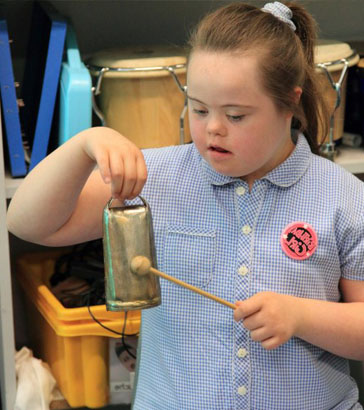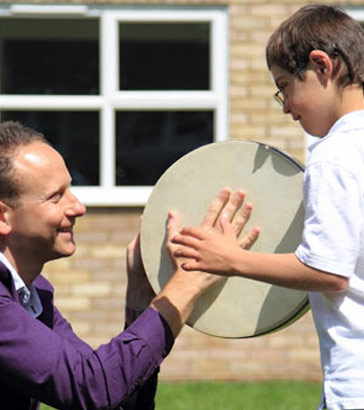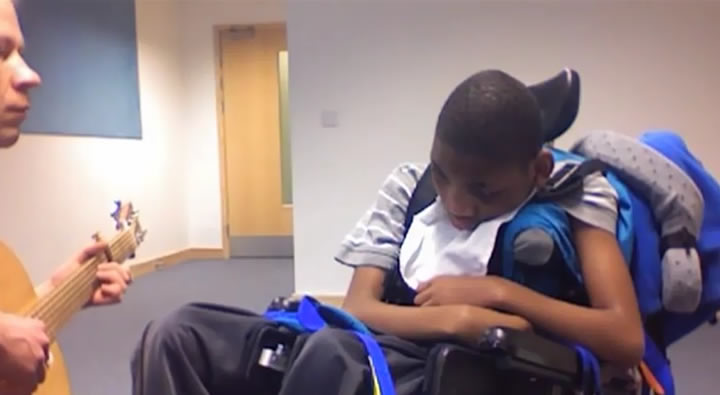
Intervention in the psychoanalytic tradition is geared at understanding a child's complex meanings, possibly originating
from experiences in infancy or from a recent traumatic episode.
These past experiences will colour their current experiences, resulting in maladaptive behaviour.
Intervention aims to work through these potential blocks to learning. Examples of creative therapeutic interventions include: art therapy, music therapy, play therapy.
Therapeutic approaches
-
 Massage therapy1:23
Massage therapy1:23 -
 Music therapy1:16
Music therapy1:16
In these two clips, teachers describe some of the benefits of different therapeutic approaches in the classroom.

The therapist provides:
- A means for expression/containment of feelings, clear boundaries, and helps to make order out of chaos.
- A trusting relationship – shared communication that develops through the medium in question.
Specialist techniques may be used to help:
- Voice feelings (articulating the 'unspeakable').
- Use of metaphor – exploring issues one-step-removed through another analogous context.

It is important to distinguish 'therapy' from 'therapeutic'. There are respectful therapeutic principles that can be safely used without specific training in therapy. These include:
1. Patience – change is possible, needs time.
2. Trust – 'being there', reliable.
3. Space – cosy contained place or freedom outside?
4. Containment – security from structure, boundaries.
5. Doing and being – balance of demands and space.
6. Shared language – regard through interaction.
7. Timing – sensitivity over a new departure.
Chesner (1995)
In this clip, you can see examples of music therapy in action, along with a discussion of its benefits and impacts. Try to spot some of the therapeutic characteristics described previously, and how they influence the therapist's approach.
- Start 'where the child is at'.
- Use a multi-sensory approach – visual, aural, kinaesthetic, touch, smell.
- Read body language – watch for 'red flags' for when the child is becoming agitated, and deflect.
- Ritual aspects – use routine beginnings, endings, to provide a sense of security.
- Transitions – support all changes, use cues to help the child anticipate and prevent feeling out of control.

